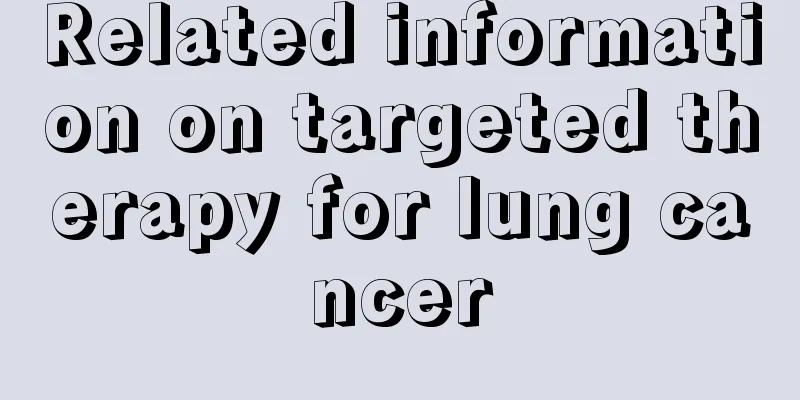Related information on targeted therapy for lung cancer

|
Targeted therapy is a drug therapy that acts on new sites compared to traditional chemotherapy. In fact, both chemotherapy and targeted therapy are drug therapy. Chemotherapy acts on various sites within cells, such as the different phases of mitosis in each cell. However, in the field of chemotherapy, the original cytotoxic drugs have reached a bottleneck, and it is difficult to move forward. Many new drugs have not been introduced. In fact, tumor growth involves not only mitosis within cells but also other processes, such as angiogenesis around cells and the impact of environmental changes around cells on tumors. Malignant tumors require initiation and signal transduction to cause unlimited proliferation. If this signal transduction is blocked, cell proliferation can be stopped. Drugs developed for these targets are currently the hottest targeted drugs. At present, the three drugs that are most familiar to people for targeted treatment of lung cancer are Iressa, Tarceva, and Conmana. In fact, the mechanisms of action of these three drugs are similar. The basic mechanisms are the same. They have brought great changes to the treatment survival of patients with EGFR (epidermal growth factor) mutations (patients with this target). Their median survival has increased from about one year to two and a half to three years. This type of drug has a very obvious effect on extending the survival of patients with this type of gene mutation, which is a revolutionary change. Some lung cancer patients, such as those with positive EGFR mutations, are sensitive to TKI drugs, such as Iressa, Tarceva, and Conmena. The improvement in survival is very obvious, which can basically double or triple the patient's survival time. However, for patients with negative gene mutations, our treatment progress to date is still limited, but it is also improving, but the progress is relatively limited. The survival of such patients is one to one and a half years. |
<<: The latest progress in the treatment of non-small cell lung cancer
>>: Treatment recommendations from lung cancer treatment experts
Recommend
How to quickly cure a stitch in the shoulder
When it comes to stitches in the side, many peopl...
The role of boric acid water
Boric acid water is boric acid solution, which is...
Why do we need to dilate mydriasis_What is mydriasis_What is mydriasis about
Many people don't know much about mydriasis. ...
The function of Ziweixing blood circulation machine
Recently, many people have had problems with poor...
Check whether your liver is healthy in 1 minute
As the number of patients with liver disease grad...
What causes fibroids
What causes fibroids? Although there are many peo...
Which hospital is best for treating brain cancer
Brain cancer refers to a new growth in the crania...
How to wash clothes with purple medicine
How to wash off gentian violet from clothes? I be...
The difference between erythromycin cyclohexetine and cephalosporin
Both erythromycin cyclic ester and cephalexin are...
What kind of sauce should I use for vegetable salad
Vegetable salad has become a favorite of many veg...
What ointment is good for acne
It is best not to squeeze pimples with your hands...
What is the recurrence rate after hemisection of thyroid cancer?
The recurrence rate after hemisection of thyroid ...
What are the symptoms of rectal mucosal prolapse
Many people do not understand the symptoms of rec...
What are the symptoms of nasopharyngeal carcinoma liver metastasis
What are the symptoms of nasopharyngeal carcinoma...
The four periods when women are most likely to develop spots. The appearance of spots is not accidental
Adolescent girls are prone to "post-inflamma...









